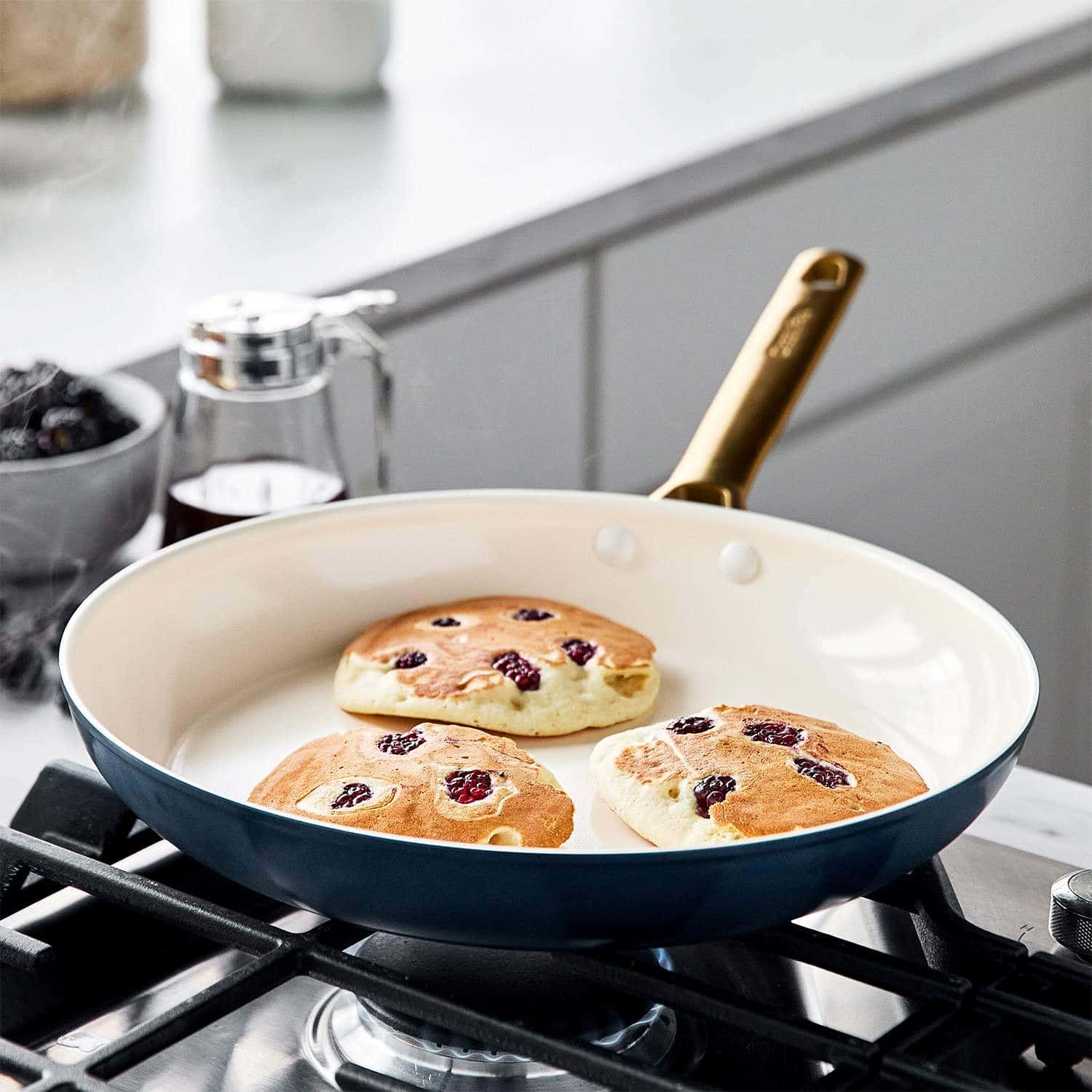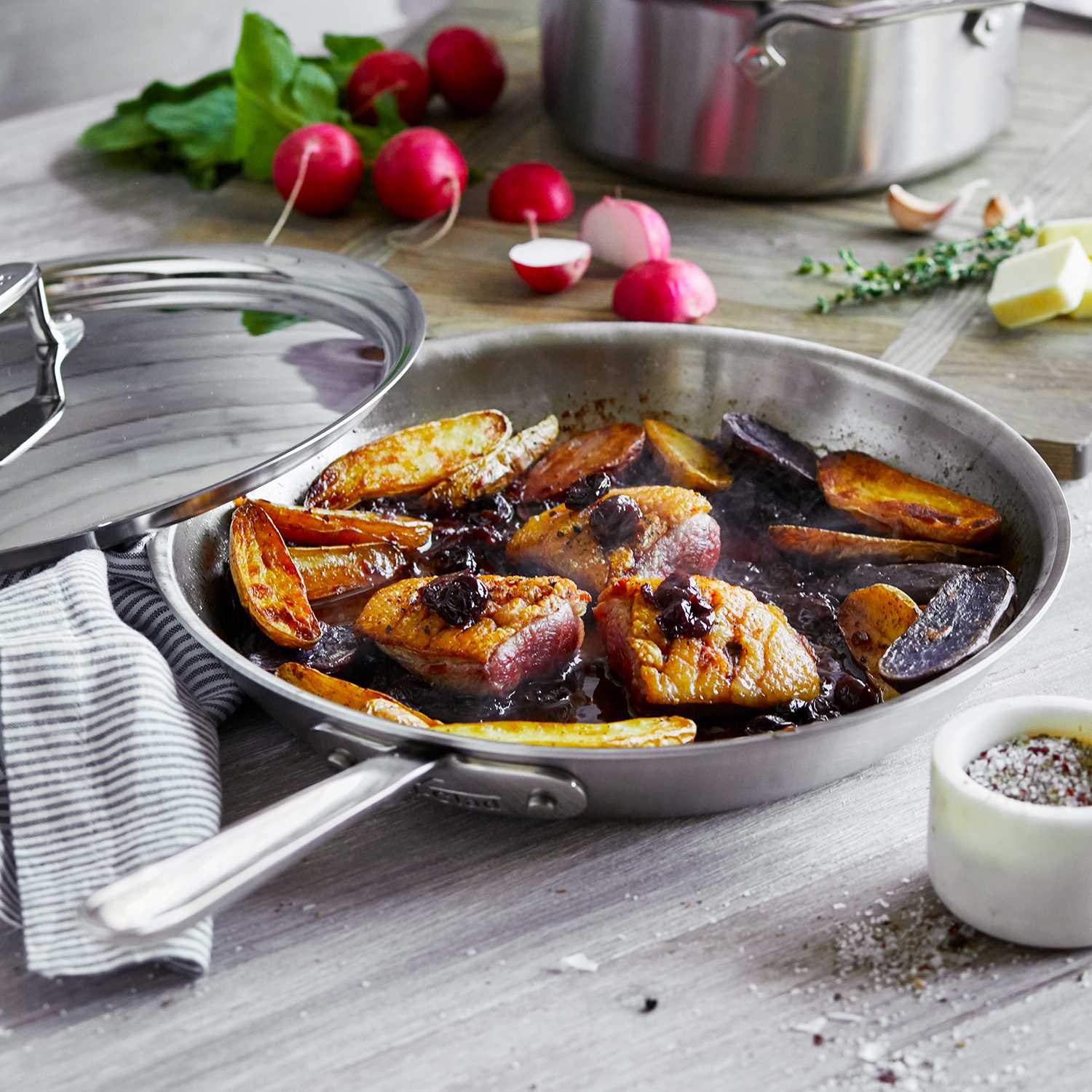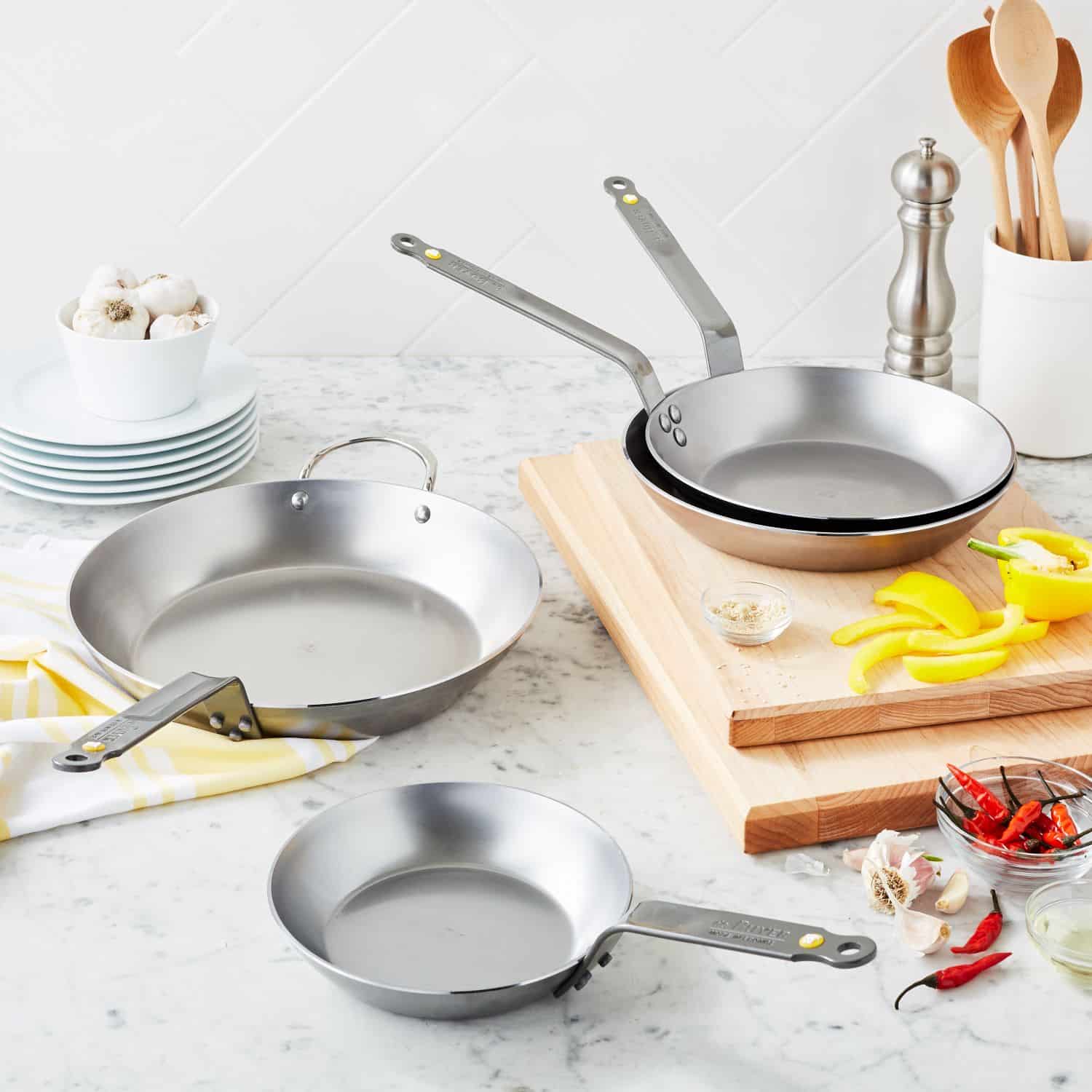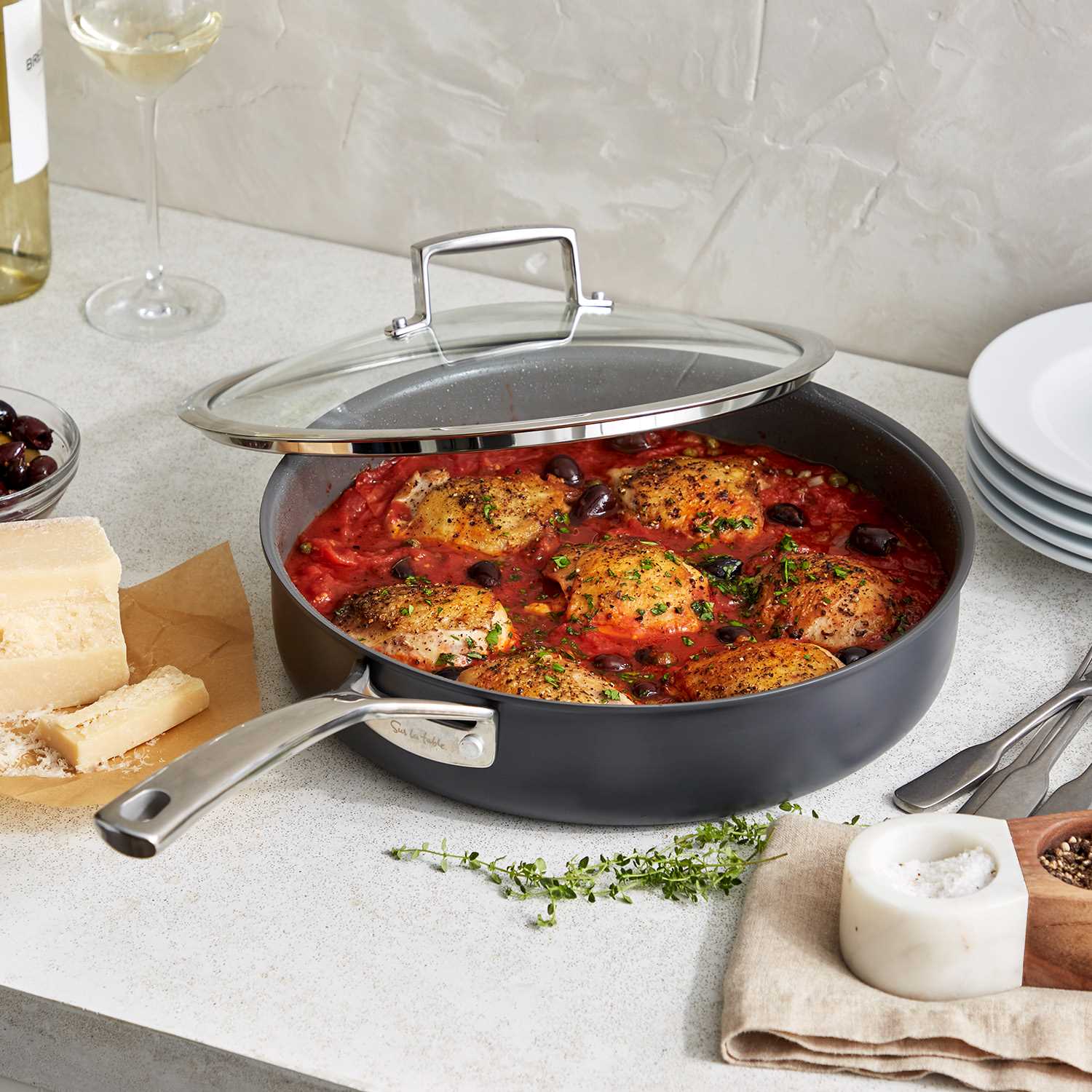Your morning brew, made by you, perfected by Breville.


As more people become aware of the potential risks associated with everyday products in their homes, the push for safer, nontoxic cookware has surged.
From eco-conscious brands like Caraway to kitchen staples like GreenPan, consumers are gravitating toward cookware that promises both safety and efficiency in the kitchen. But with this growing awareness, it’s easy to become overwhelmed by the barrage of information—and misinformation—surrounding nonstick coatings.
You’ve likely heard terms like PFAs, PFOs and PTFE in connection with nonstick cookware, but what exactly do these acronyms stand for? Are these chemicals safe? And how do you navigate the market to ensure you’re making the healthiest choices for your kitchen and your family?
We’re here to help you decode the science behind nonstick coatings so you can cook with confidence–let’s break it down.
Hungry for more? Explore our collection of Ceramic Nonstick Cookware and snag the next best piece for your kitchen!

To fully understand the safety concerns surrounding nonstick coatings, it’s crucial to break down the most commonly referenced terms: PFAs, PFOs and PTFE.
PFAs refer to a vast group of synthetic chemicals used in a wide variety of industries. Developed in the 1940s, these chemicals became popular for their ability to repel water, grease and stains. You’ll find PFAs in everything from water-resistant clothing to food packaging, firefighting foam and, of course, nonstick cookware.
However, PFAs have garnered significant concern because they don’t break down naturally, earning them the nickname “forever chemicals.” They persist in the environment and in our bodies, where they can accumulate over time. According to studies, exposure to high levels of certain PFAs has been linked to adverse health effects, including cancer, liver damage, weakened immune systems and developmental issues in children.
While the sheer number of PFAs makes it difficult to avoid them entirely, many manufacturers are taking steps to reduce or eliminate their presence in consumer goods. Nonstick cookware is one area where shoppers are now looking for PFAs-free products as they try to minimize exposure.
PFOA and PFOS are specific types of PFAs that were once commonly used in the production of nonstick coatings. In the mid-20th century, PFOA was integral in creating the smooth, slick surface that made nonstick cookware so popular. But concerns about the potential toxicity of PFOA soon surfaced, with studies showing links between PFOA exposure and various health issues.
Because of these concerns, PFOA was officially phased out of nonstick cookware production in the U.S. by 2015. While cookware labeled “PFOA-free” has become the industry standard, older nonstick pans (or those purchased from unregulated markets) may still contain PFOA. It’s always a good idea to check the label or opt for newer products to ensure your cookware is free from this harmful chemical.
PTFE, commonly known by its brand name Teflon, is a chemical compound used in many modern nonstick coatings. Developed in the 1930s, PTFE revolutionized cooking by allowing food to slide easily off the pan, minimizing the need for oil or butter. PTFE is incredibly durable, nonreactive and stable under most cooking conditions, which is why it’s still a common material in nonstick cookware today.
However, PTFE does come with some caveats. While it’s generally considered safe when used under normal cooking temperatures (below 500°F), PTFE can break down when overheated. At high temperatures, PTFE releases fumes that can cause flu-like symptoms in humans—a condition commonly known as “Teflon flu.”
If you’re wary of using cookware that contains PFAs, PFOA or PTFE, you’re not alone. Many consumers are opting for alternative materials that promise the same nonstick performance without the potential health risks. Here are some of the most popular nontoxic cookware options available today:

Ceramic cookware has become a popular alternative to PTFE-coated pans, offering a naturally slick cooking surface without the use of synthetic chemicals.
Ceramic coatings are typically made from silica (essentially sand) and are free from PFAs, PFOA and PTFE. These products are known for their high heat tolerance—and, unlike PTFE, ceramic doesn’t release harmful fumes when exposed to high temperatures. However, ceramic coatings tend to wear out faster than PTFE, meaning you may need to replace them more frequently.
Related: Is Ceramic Cookware Safe?

Cast iron is one of the oldest and most reliable types of cookware. When properly seasoned, cast iron develops a natural nonstick surface, making it perfect for searing, frying and baking. While it requires more maintenance than other cookware, cast iron is extremely durable and can last for generations. Plus, it’s free from synthetic chemicals, making it a safe and sustainable option for nontoxic cooking.

Stainless steel is another excellent option for those looking to avoid nonstick coatings altogether. While it doesn’t offer the same slick surface as PTFE or ceramic, stainless steel is highly durable, resistant to rust and free from harmful chemicals. With proper cooking techniques, stainless steel can be an effective alternative for sautéing, frying and boiling.

Similar to cast iron, carbon steel is made of iron and carbon, offering natural nonstick properties when properly seasoned. Carbon steel cookware is lightweight, heats quickly and is free from synthetic coatings, making it a great nontoxic option. Like cast iron, it requires regular seasoning and care to maintain its nonstick surface, but it’s a versatile and durable choice for everyday cooking.

With so many options on the market, choosing the right cookware can feel like a daunting task. Here are a few tips to help you navigate your choices:

As consumers become more discerning about the products they use in their homes, the demand for nontoxic, health-conscious cookware has never been higher. Understanding the role of chemicals like PFAs, PFOA and PTFE in nonstick coatings is crucial for making informed choices about your kitchen gear.
While PTFE-coated cookware remains popular for its convenience, there are now plenty of alternatives that achieve the same level of performance. Whether you opt for ceramic, cast iron, stainless steel or nonstick, the key is to prioritize both safety and functionality in your kitchen.
Related: The Ultimate Guide to Cookware Materials
Hungry for more? Explore our collection of Ceramic Nonstick Cookware and snag the next best piece for your kitchen!
Join The Conversation